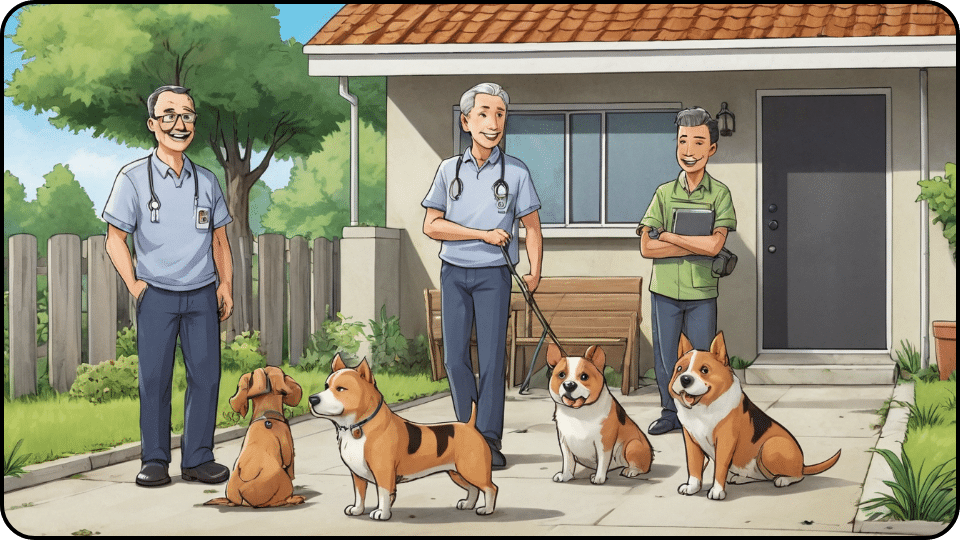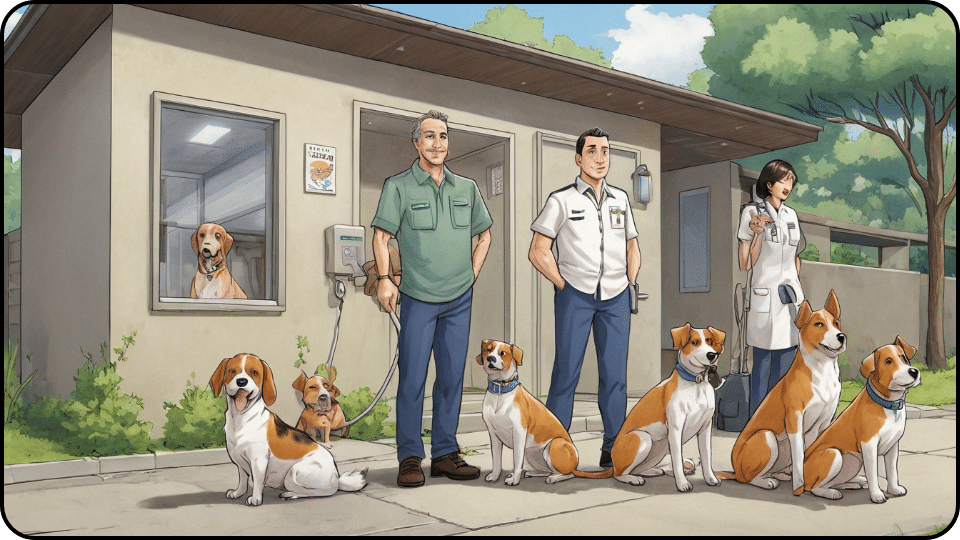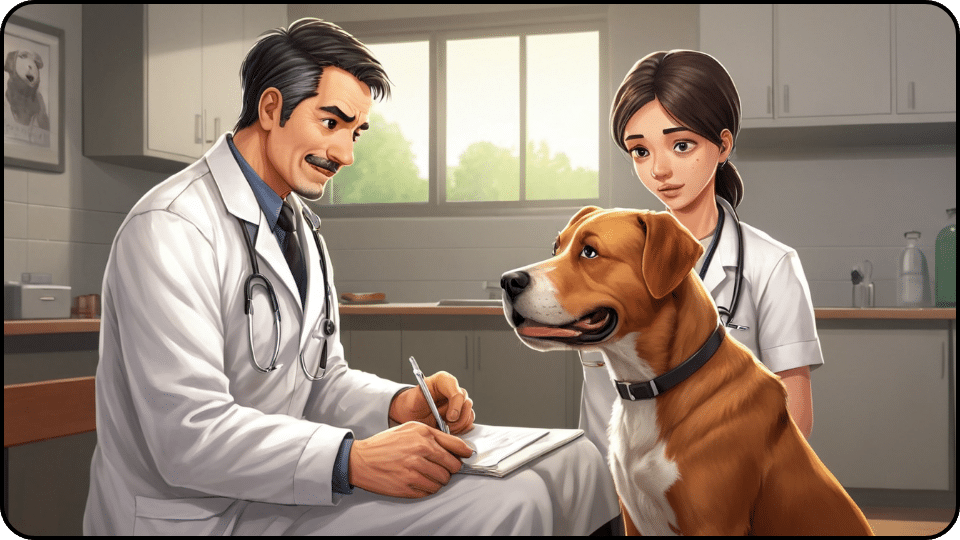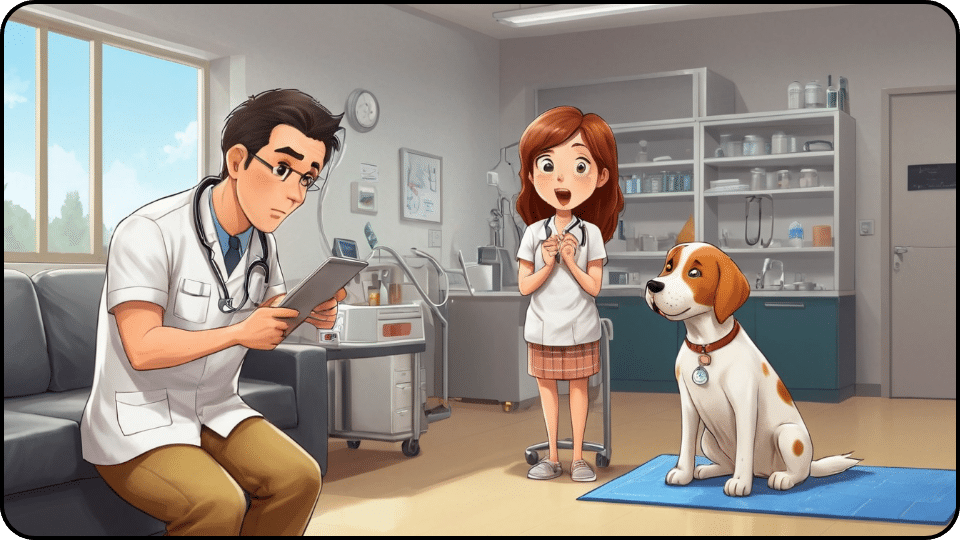“When to put your dog down quiz” – it’s a heart-wrenching question that no pet owner wants to face, but sometimes it’s necessary to consider the well-being of your furry companion. As dogs age or battle serious illnesses, their quality of life can deteriorate, leaving owners grappling with difficult decisions about their care. Dog medical issues and treatments can be complex and emotionally taxing, but assessing your pet’s quality of life is crucial in determining when it might be time to say goodbye. This article aims to provide guidance and support for pet owners facing this challenging situation. We’ll explore the factors to consider when evaluating your dog’s quality of life, including physical health, emotional well-being, and the ability to enjoy daily activities. By taking an honest look at your pet’s condition and consulting with your veterinarian, you can make an informed decision that prioritizes your dog’s comfort and dignity. While the thought of losing a beloved companion is never easy, this quiz will help you navigate the process with compassion and understanding.
Key Takeaway
- Use a quality of life scale to objectively assess your pet’s comfort and happiness.
- Consider factors like pain management, mobility, eating, and the human-animal bond.
- Work with your veterinarian to evaluate your pet’s condition and make the best decision.
Evaluating Your Pet’s Quality of Life Using the Life Scale
Determining your pet’s quality of life score using the Life Scale involves careful consideration of various factors. Start by assessing your pet’s level of pain, hunger, hydration, and overall happiness. These elements are crucial indicators of your pet’s comfort and well-being.
Next, observe if your pet can still express joy and interest in family activities and their surroundings. This can be a sign of a healthy human-animal bond and indicates that your pet is still engaged and enjoying life. A pet that shows enthusiasm for playtime, walks, or simply being with you is likely experiencing a good quality of life.
Evaluate your pet’s responsiveness and their need for human or mechanical assistance, such as a cart or wheelchair. Pets that require significant help to move around may have limited mobility, which can affect their quality of life. Consider if your pet can interact with family members and other pets, as socialization is an important aspect of their happiness.
Lastly, check for physical signs of discomfort, such as pressure sores or other indicators that may impact your pet’s life negatively. Regularly inspect your pet’s bed and living area to ensure they are comfortable and free from potential irritants. By keeping these factors in mind, you can objectively assess your pet’s condition and make informed decisions about their care.


Ensuring Your Pet’s Pain Successfully Managed
Work with your vet to ensure your pet’s pain is adequately controlled through pain medications and management techniques. Pain management is crucial for maintaining your pet’s quality of life. Regularly assess your pet’s pain levels and pet eating habits. Adjust treatments as needed to ensure comfort. A pet in pain may show signs of distress, such as whimpering or restlessness. Keep a close watch and maintain open communication with your veterinarian.
Provide a comfortable environment with a suitable pet’s bed and adequate space to rest. Ensure your pet has a cozy place to relax. Check the bed for pressure sores or signs of discomfort. A soft bed can help alleviate pain and improve your pet’s rest. Consider the need to supplement fluid intake, such as with subcutaneous fluids, to prevent dehydration. Proper hydration is essential for your pet’s health. Monitor their water intake and consult your vet if you notice any issues.
Watch for signs of trouble breathing or open-mouth breathing and take action to address it promptly. Breathing difficulties can be a sign of serious health issues. If your pet struggles to breathe, seek veterinary advice immediately. This could indicate a need for medical intervention. Your pet’s breathing ability is a key factor in their overall well-being. By staying vigilant and proactive, you can help ensure your pet’s comfort and happiness.


Maintaining a Healthy Human-Animal Bond
Recognize the importance of the human-animal bond in assessing your pet’s quality of life. This bond is a critical component of your pet’s well-being. It’s not just about physical health; emotional connections matter, too. Your pet’s happiness and comfort are tied to their relationship with you and other family members.
Ensure you are meeting your pet’s emotional needs with regular attention and interaction. Spend quality time with your pet daily. Engage in activities they enjoy, like playing with their favorite toy or taking a leisurely walk. This not only strengthens your bond but also boosts your mood and quality of life.
Consider your pet’s attachment to you and other family members. Pets thrive on love and companionship. Evaluate if your pet can still form meaningful connections with humans and other animals. A pet that is responsive and seeks interaction is often content and happy.
Look for signs your pet may be depressed or experiencing separation anxiety. These can include changes in behavior, such as withdrawal, loss of interest in activities, or excessive clinginess. Addressing these issues with patience and care can improve your pet’s emotional health. Regularly assess their emotional state to ensure they are living a fulfilling life.


Signs It May Be Time to Consider Euthanasia
When considering euthanasia, it’s crucial to observe various signs that may indicate your pet is struggling. Significant weight loss is often a clear indicator that your pet’s health is deteriorating. A decreased appetite and difficulty eating regular food can signify serious underlying medical conditions. These changes in pet eating habits should prompt a thorough assessment of your pet’s health.
Mobility issues are another critical factor to evaluate. Assess your pet’s ability to walk and move around without difficulty. Limited mobility can severely impact your pet’s quality of life, making it challenging for them to engage in activities they once enjoyed. If your pet requires human or mechanical help to get around, this might be a sign that their mobility is significantly compromised.
It’s essential to determine if your pet is experiencing more bad days than good days. This involves an overall assessment of their quality of life. Chronic pain or suffering that cannot be adequately managed with pain medications is a strong indication that euthanasia might be the kindest option. Pets that are in constant pain often show signs of distress and may no longer express joy or interest in life.
Lastly, consider your pet’s response to treatment and if their condition is continuing to decline despite medical interventions. If treatments are no longer effective and your pet’s condition worsens, it may be time to have an honest discussion with your veterinarian about the best course of action. Remember, the decision to put your pet down is a deeply personal one, but ensuring their comfort and happiness should always be the priority.


Tools to Help Make an Objective End-of-Life Decision
Using a quality of life scale like the HHHHHMM scale can provide a structured way to assess your pet’s comfort and happiness. This scale helps evaluate various aspects of your pet’s life, such as pain management, appetite, hydration, hygiene, happiness, mobility, and the balance between good days and bad days. Each aspect is scored to give you a clearer picture of your pet’s overall well-being.
It’s important to have an honest quality of life discussion with your veterinarian. They can provide insights into your pet’s condition and prognosis. Veterinarians can help you understand the implications of your pet’s symptoms and the potential outcomes of different treatment options. Their expertise is invaluable in making informed decisions about your pet’s care.
Consider seeking a second opinion or consulting with a veterinary specialist. This can offer additional perspectives and guidance, especially if you’re uncertain about the next steps. Specialists can provide more detailed assessments of complex medical conditions, ensuring you have all the information needed to decide what’s best for your pet.
Review your pet’s medical history and past responses to treatment options. This can highlight patterns or changes in their condition and help determine if palliative or hospice care might be beneficial. Such care focuses on maintaining quality of life and comfort for pets with terminal illnesses, ensuring they can enjoy their remaining time as much as possible.
| Score | Criterion |
|---|---|
| 0-10 | Hurt – Adequate pain control, ensuring the pet’s pain is successfully managed and they are comfortable. |
| 0-10 | Hunger – Appetite and eating ability, observing if the pet is eating regular food and maintaining their weight. |
| 0-10 | Hydration – Fluid intake and supplementation if needed, ensuring the pet receives adequate hydration, possibly with subcutaneous fluids. |
| 0-10 | Hygiene – Ability to stay clean and comfortable, checking for cleanliness and the absence of pressure sores on the pet’s bed. |
| 0-10 | Happiness – Expression of joy and interest in life, looking for signs that the pet expresses joy and is responsive to family activities. |
| 0-10 | Mobility – Ability to move around comfortably, assessing if the pet has limited mobility and requires human or mechanical help. |
| 0-10 | More Good Days than Bad – Overall quality of life assessment, determining if the pet has more good days than bad, reflecting a good quality of life. |


Making a Confident End-of-Life Decision for Your Pet
Trust your instincts and knowledge as a pet owner to determine what is best for your dog or cat. You know your pet better than anyone else. Pay attention to subtle changes in their behavior and overall demeanor. These insights can guide you in making an informed decision.
Critically evaluate your pet’s quality of life and if they are still able to enjoy the things they love. Consider their ability to participate in family activities, play with their favorite toy, or go for walks. A pet that can no longer engage in these activities may be struggling. Use a quality of life scale to objectively assess their condition, looking for signs of pain, depression, or difficulty moving.
Weigh the potential benefits of euthanasia in preventing further suffering against your own emotional needs. It’s a difficult balance between wanting to keep your pet with you and ensuring they do not endure unnecessary pain. Make a list of pros and cons to help clarify your thoughts. Discuss these points with family members to reach a consensus.
Have a quality-of-life discussion with your vet to get their objective opinion and guidance. Veterinarians can provide valuable insights based on their experience and understanding of your pet’s medical condition. Take the time you need to say goodbye while ensuring you don’t wait too long and let your pet suffer. Plan a peaceful farewell that honors your pet’s life and the joy they brought to your home.


Final Thought
Making the decision to euthanize a beloved pet is never easy, but it is sometimes the most loving thing we can do for our animal companions. By objectively evaluating your pet’s quality of life, working with your veterinarian, and focusing on what’s best for your pet, you can make a confident decision. Remember that euthanasia is a gift we are able to give our pets to end their suffering and allow them to pass peacefully, surrounded by love. Trust your instincts, treasure the memories, and know that you are making the right choice for your furry friend.
Quick Answers for FAQs
How do you determine if it’s time to put your dog down?
The dog’s lack of responsiveness to sounds and behavioral issues may be reflected in its expression. Signs of restlessness, discomfort, or choosing unusual places to lie down can be observed. The dog might avoid interaction, exhibit excessive panting, or appear shaky. Symptoms like breathlessness, uncertainty, and a loss of interest in walks are also common.
What is considered a poor quality of life for a dog?
Signs of deterioration in a dog include the absence of tail wagging, a lack of a joyful expression, no cuddling, and a diminished exchange of affection.
How do you know when your dog has had enough of life?
Lethargy is a common trait and behavior observed in dogs nearing the end of their life. As they approach this stage, dogs often sleep more and show less interest in their usual activities and walks. This can be an indicator that they are nearing the end of their journey.
How do you know it’s time to say goodbye to your dog?
Life expectancy is an important factor. If your dog is unable to maintain a good quality of life, it may be time to consider making the difficult decision to let them go peacefully.
